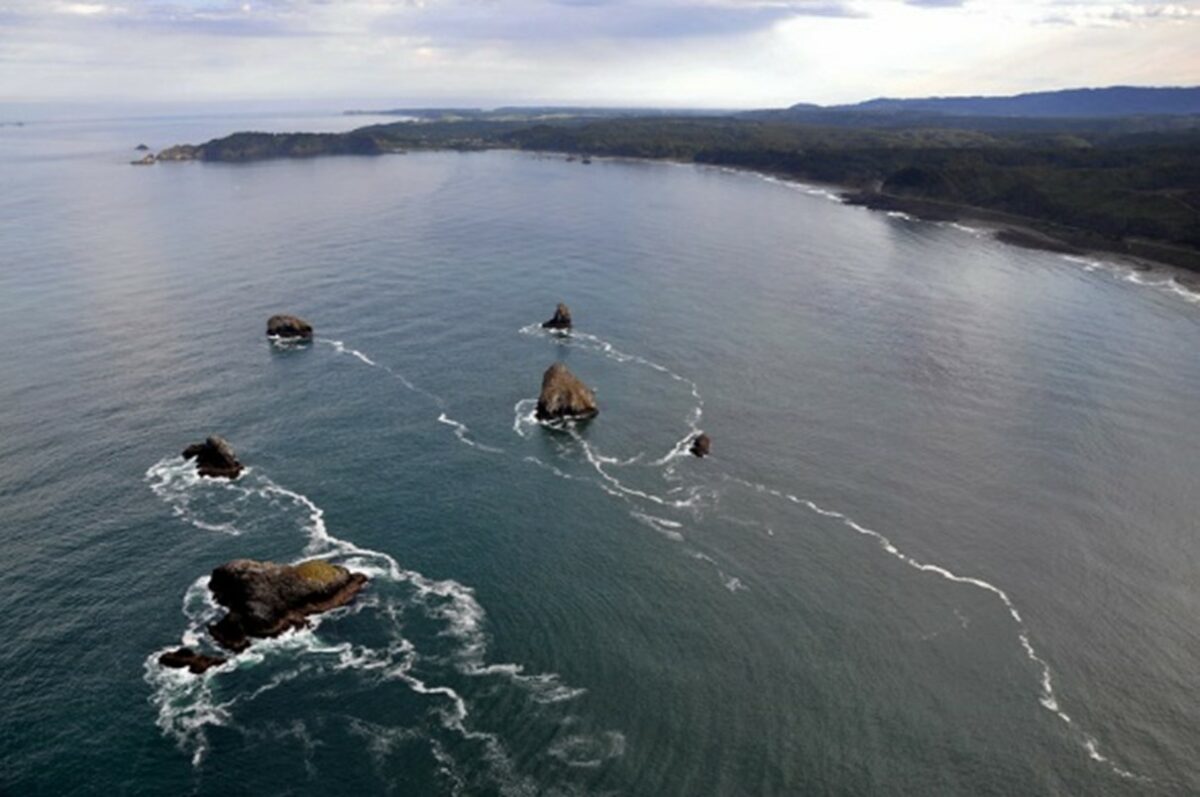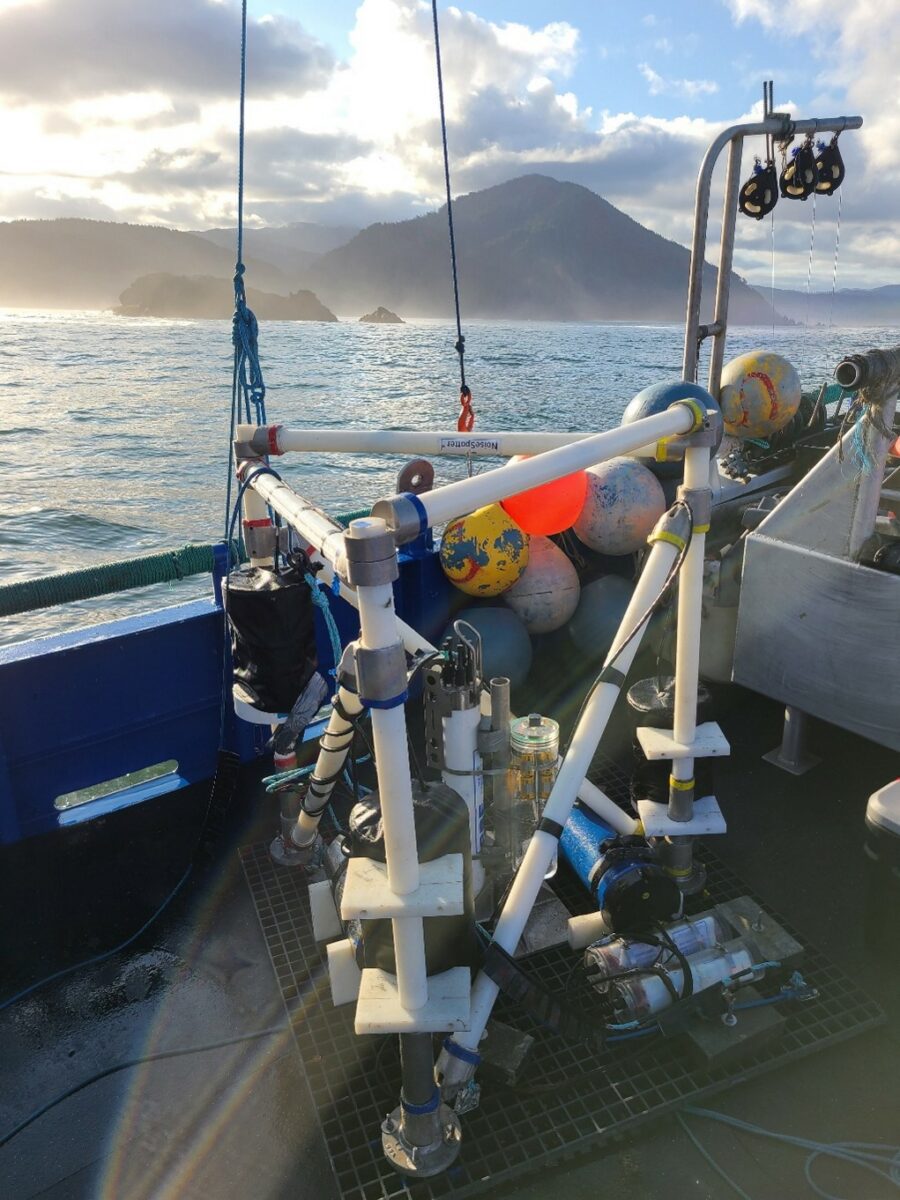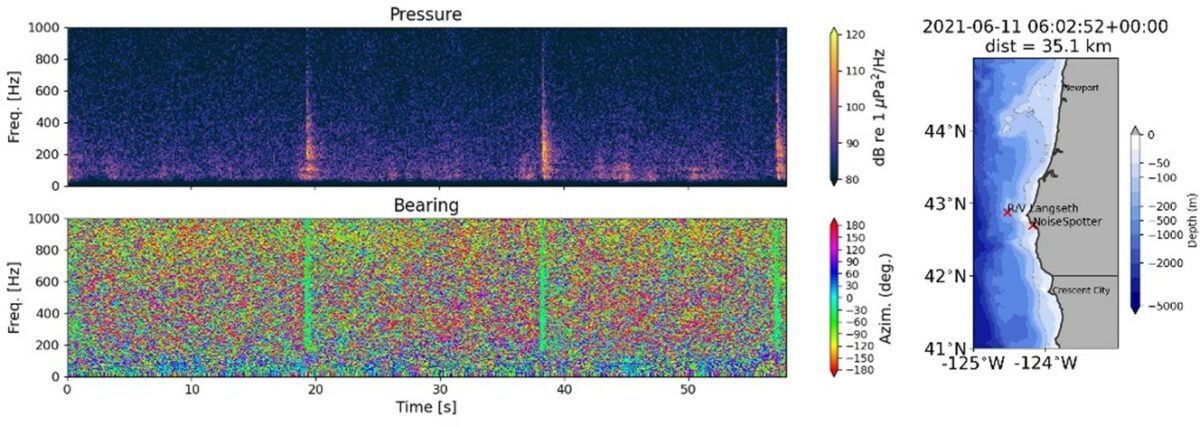National Science Foundation
By Kaustubha Raghukumar, Ph.D., Senior Consultant
Grace Chang, Ph.D., Senior Science Advisor, Director of Research and Development

OUR CHALLENGE
Fishes and many invertebrates use sound, primarily particle motion, to acquire information about their environment (i.e., an approaching predator or the presence of a potential mate) but also for communication and navigation. Alterations to the soundscape from anthropogenic sounds can therefore potentially affect behavior and survivability of fishes and invertebrates. However, in situ measurements of the behavioral response of fishes to elevated particle velocity levels are very limited, which prevents the formulation of informed regulatory guidelines for particle velocity thresholds.
Redfish Rocks Marine Reserve
OUR APPROACH
Integral assisted Oregon State University on an NSF-sponsored study to assess the behavioral responses of rockfishes, lingcods and Dungeness crab to these seismic pulses from a geophysical airgun survey using acoustic telemetry, tracking 2-D movements and acceleration of all species, and NoiseSpotter® particle motion measurements.
The R/V Langseth conducted a geophysical survey to collect data along the Cascadia Subduction Zone off the Oregon and Washington coast using high-energy seismic survey equipment, collecting 2-D marine seismic data via an array of 36 airguns as an energy source. The survey commenced near Seattle, proceeded southward until near the Oregon-California border, and then continued northward until offshore of British Columbia.
Measurements of acoustic pressure and particle velocity, before, during and after the survey were made using Noisespotter®, an acoustic vector sensor array which was deployed within the Redfish Rocks Marine Reserve (RRMR) on May 15, 2021, and recovered on July 21, 2021.
NoiseSpotter(R) about to be deployed at Redfish Rocks Marine Reserve,
Directional processing of sounds from seismic airgun survey. (Top) Spectrogram seismic pulses (Bottom) Azimuthal angles of sounds. (Right) Locations of survey ship and NoiseSpotter®.
OUR IMPACT
Most studies on the impacts of sound on animals in both open oceans and shallow-water environments focus only on sound pressure. However, this overlooks the sensitivity of fishes and invertebrates to the particle motion that accompanies the pressure pulse in the transmission of the sound. NoiseSpotter® measurements of the particle motion component of the acoustic disturbance from the seismic survey explosions helped fill this important data gap.





